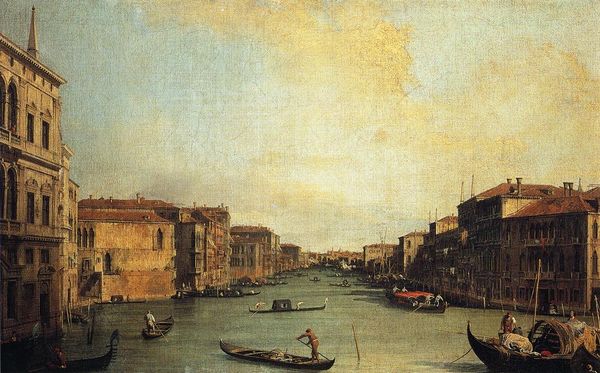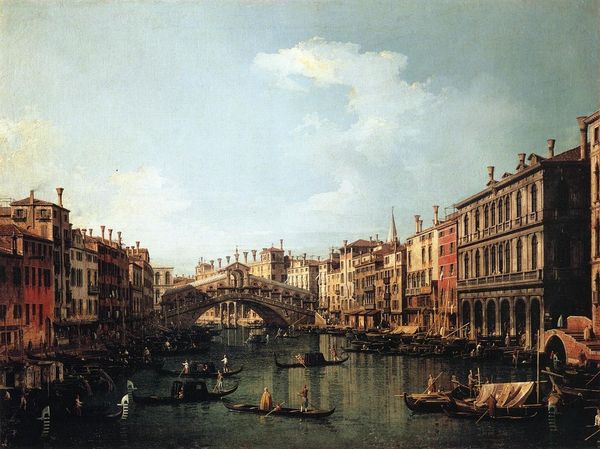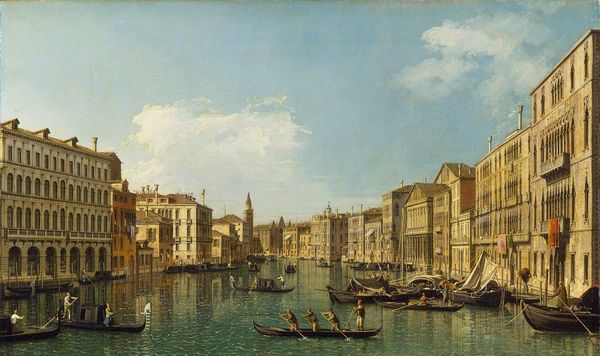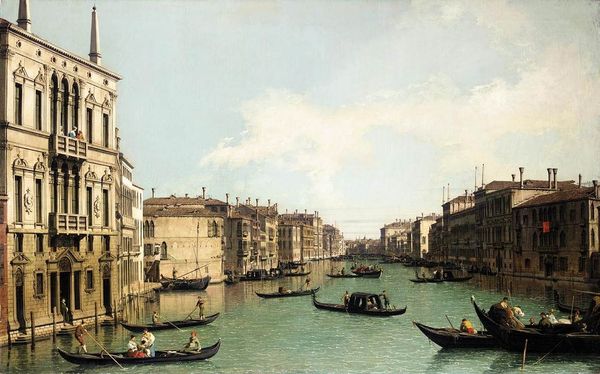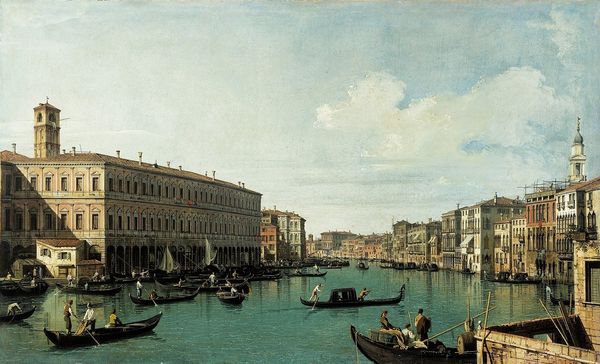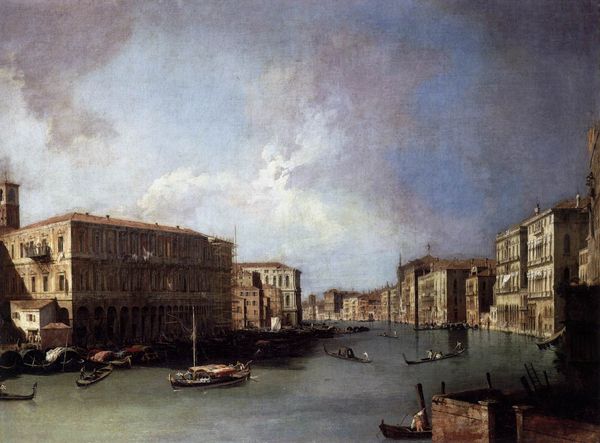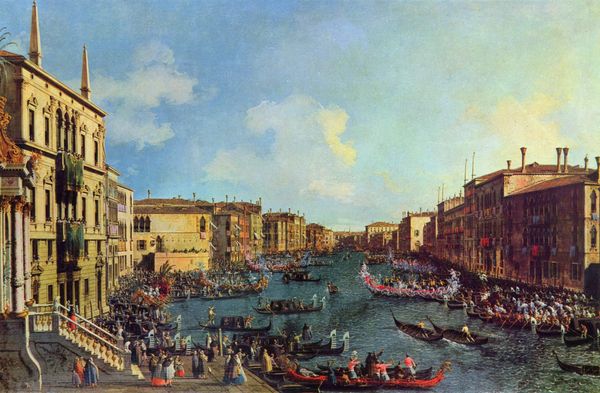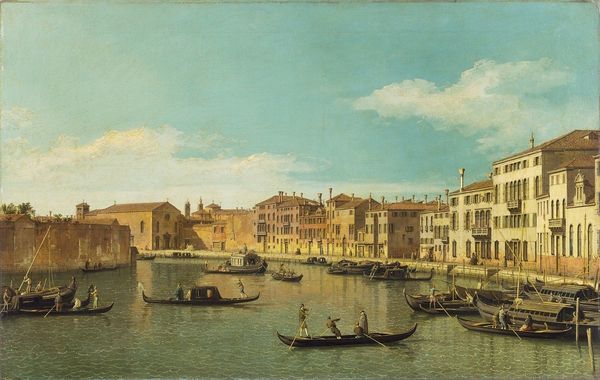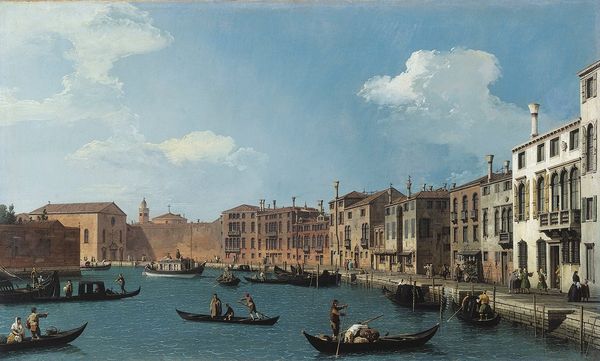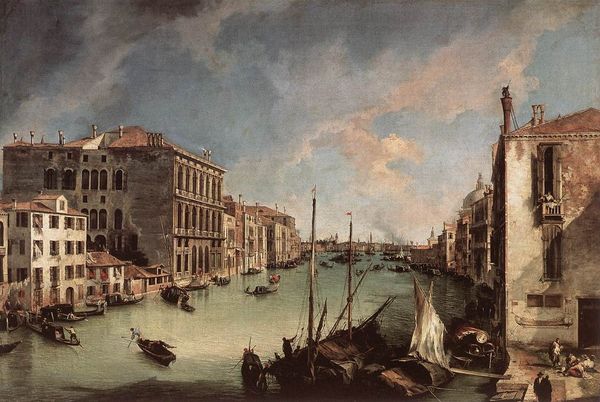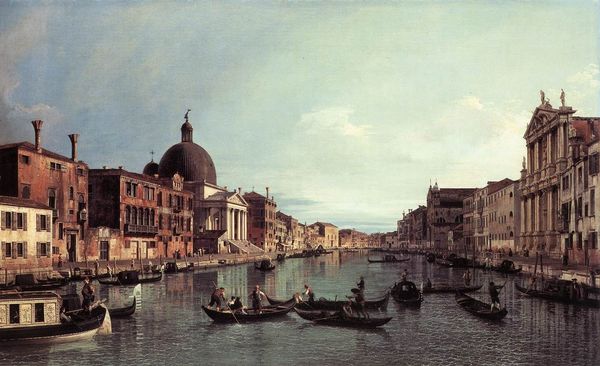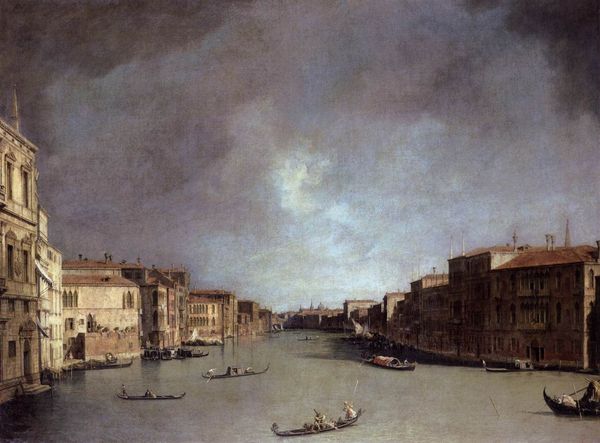
painting, oil-paint
#
boat
#
urban landscape
#
venetian-painting
#
baroque
#
painting
#
oil-paint
#
landscape
#
urban cityscape
#
perspective
#
figuration
#
oil painting
#
city scape
#
orientalism
#
water
#
cityscape
#
genre-painting
#
realism
Copyright: Public domain
Canaletto made this view of the Grand Canal in Venice using oil paint on canvas. Though seemingly traditional materials, oil paint enabled Canaletto to capture the atmospheric effects of light on water and architecture with incredible precision, a kind of 'high-definition' before its time. The intensive labor required for grinding pigments, mixing paints, preparing the canvas, and applying delicate layers of glazes, all contributed to the high value placed on such paintings. Canaletto capitalized on Venice's popularity as a tourist destination, producing views of the city for wealthy visitors to take home as souvenirs. These vedute, or view paintings, were essentially luxury goods, commodities that celebrated Venice as a center of trade, leisure, and artistic production. The social context of 18th-century Venice – its economy, class structure, and the culture of tourism – is thus embedded within the very materiality and making of Canaletto's paintings, blurring the lines between fine art, craft, and commercial enterprise.
Comments
No comments
Be the first to comment and join the conversation on the ultimate creative platform.

